Key Points:
- SpaceX has further updated its website - now taking orders for the Starlink Mini from the general public in four Central American countries.
- The hardware and plan pricing offered internationally is a fraction of the price in the USA.
- The international "Mini" plan offering is affordable, and offers unlimited data - for fixed location installs.
- The "Mini Roam" plan offered in the USA remains capped at 50 GB, but there are signs that a revised plan may be coming soon.
- We have some educated guesses that might explain this haphazard and confusing launch...
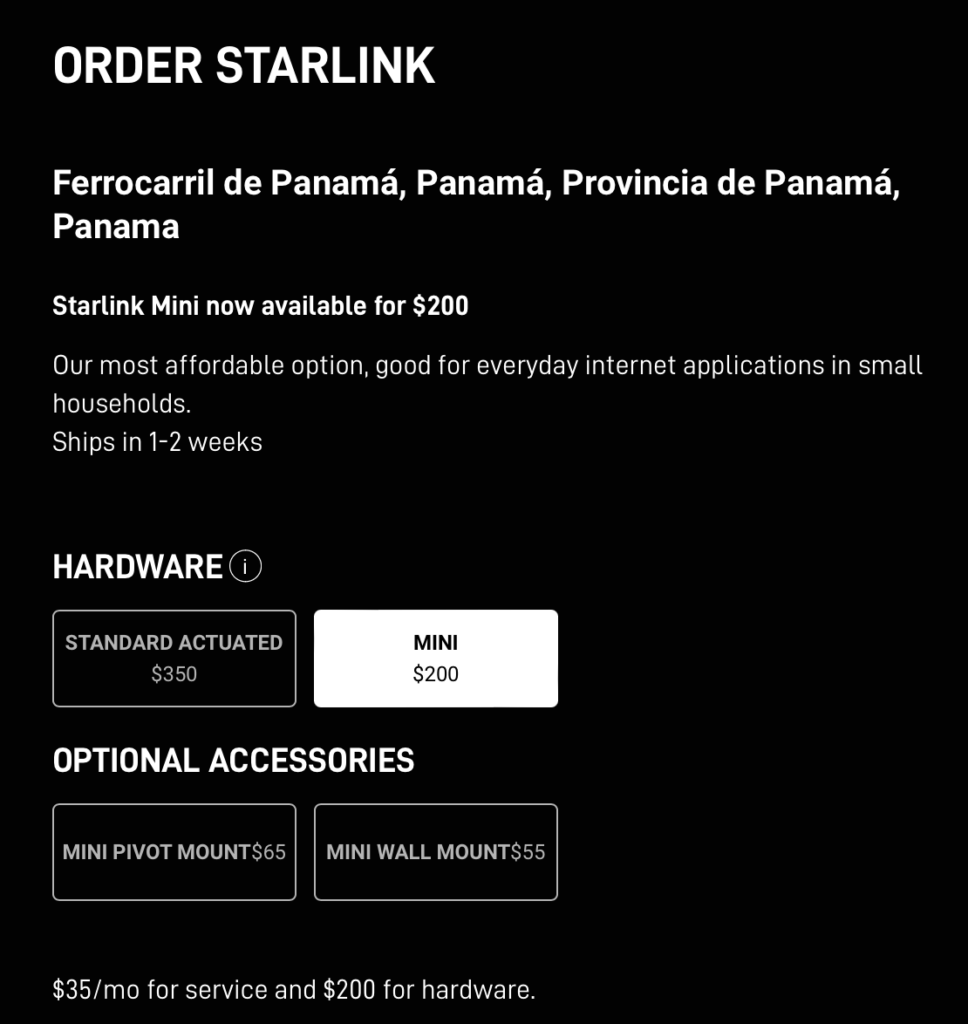
The new Starlink Mini seems like the ideal Starlink hardware option for our audience of nomadic RVers and boaters.
But the confusing and seemingly haphazard way it has launched over the past week has been anything but ideal - leaving many potential customers feeling frustrated.
Consider the sequence of events:
- Elon Musk posts that the Starlink Mini would be "about half the price of the standard dish to buy and monthly subscription, but you can still watch multiple 4k video streams simultaneously!"
- A day later, the Starlink Mini hardware specs are published - revealing a smaller, lighter, and much more power efficient Starlink system that can run directly off of DC. This is nearly the ideal hardware for the RV and boating market.
- A day later, SpaceX sends out emails to selected customers in the USA inviting them to be the first to purchase Starlink Mini. The hardware cost is revealed to be $599 ($100 more than Standard), and the "Mini Roam" data plan is revealed to be capped at 50GB usage a month, among other severe limitations.
- A few days later - SpaceX begins taking Starlink Mini orders internationally, offering the hardware for just $200, combined with an extremely affordable $35/mo unlimited "Mini" data plan that is for fixed location usage only.
- And finally - Starlink revises the "Mini Roam" service plan page for the USA to say that the plan will only be available through July 4th, 2024 - leading to speculation that a new (better?) plan may be coming, perhaps due to the initial backlash...
No wonder so many nomads have been a mixture of confused, excited, and upset about the Starlink Mini launch.
SpaceX seems to have the hardware and the capability to offer what people want - but it isn't giving it to them.
Why?
We have some guesses...
Read our stories from earlier in the week more on the Starlink Mini hardware and power consumption details, and the first reaction to the Mini Roam plan:
- UPDATED: Elon Teases Starlink Mini Details – Cheaper Hardware and Subscription Cost?
- Starlink Mini Dish Launched – Disappointing “Mini Roam” Data Plan Dashes Nomadic Dreams
Table of Contents
Starlink Mini Data Plan Video
The "Mini" & "Mini Roam" Starlink Plans Compared
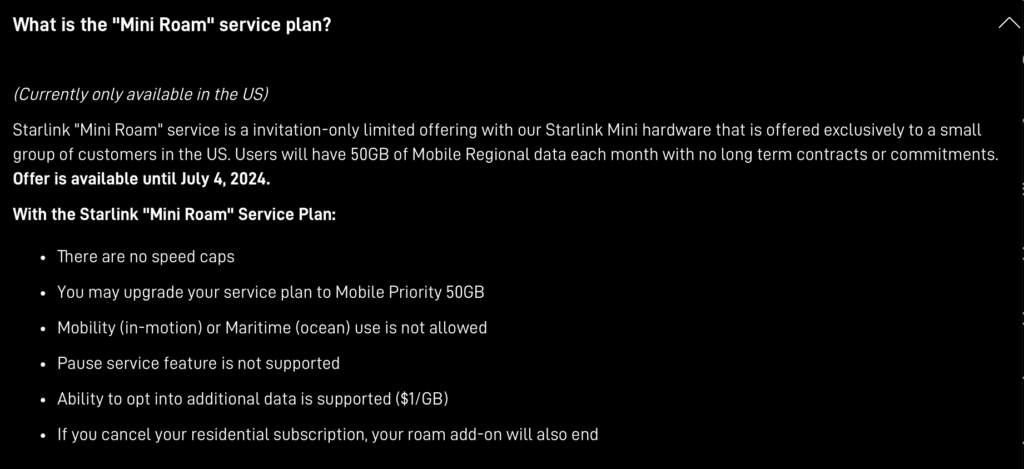
The Starlink "Mini Roam" plan is currently the only Starlink Mini plan option in the USA - and it is only available to customers who received a (non-transferable) invitation email to be among the first to purchase a Starlink Mini - for $599.
But this $30/mo Starlink "Mini Roam" data plan is surprisingly limited:
- Data is capped at 50 GB per month, with opt-in additional data available for $1/GB.
- In motion and on water usage is "not allowed" - though presumably nearshore and under 10 mph usage will remain supported, just like current Starlink systems.
- Pausing service when not needed is not supported.
- The $30/mo "Mini Roam" plan requires an existing $120/mo Starlink residential plan. Canceling your residential service will also cancel the Mini Roam plan. There is no option to have a standalone Starlink Mini in the USA.
- The plan can be upgraded to a $250/mo Mobile Priority 50GB plan - which seems to be the only way to enable unlimited data.
The initial version of the Starlink "Mini Roam" FAQ and the invitation emails sent out indicated that Mini Roam coverage would be available only in the USA, but this particular line has been recently removed from the FAQ.
This change potentially opens the door to continental roaming into Mexico and Canada with the Mini Roam plan, but this details has not been confirmed.
The plan page has also been revised to indicate that this plan is only available for signup until July 4th.
After that date - will SpaceX have a new and more appealing Mini data plan offering?
Starlink’s International “Mini” Service Plan
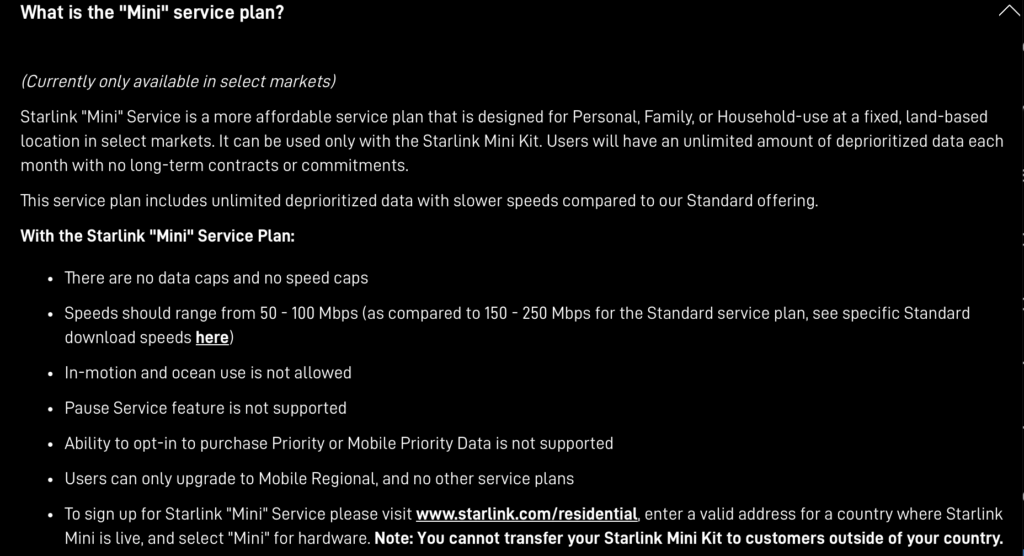
While the Starlink Mini is available by invitation only in the USA, it is now open for all customers to order with addresses in Colombia, El Salvador, Guatemala, and Panama.
In these countries - the Starlink Mini hardware is being offered for just $200, and the Starlink "Mini" service plan is just $35/mo.
But this is a very different plan than the Starlink "Mini Roam" being offered in the USA.
Here are the key details:
- Unlimited deprioritized (compared to Starlink Standard) data.
- Expected download performance of 50 - 100 Mbps, compared to 150 - 250 Mbps for Starlink Standard.
- Intended for fixed location land-based usage. Customers who want to travel can upgrade to the Mobile Regional plan for $84/mo (current pricing in Panama).
- Service can not be paused, but can be canceled at any time.
- You can not transfer your Starlink Mini to a customer outside your home country.
It is not unusual for SpaceX to offer Starlink at prices that vary by country, but the block on being able to transfer hardware to other countries is a new (and hopefully temporary) restriction.

Is The Mini Intentionally Being Held Back in the USA?
Many nomadic customers in the USA would love to get the Starlink Mini, if they weren't required to also have existing residential service, and if they could get a reasonable data plan for it.
Even the $150/mo Mobile Regional plan currently offered with the Starlink Standard would be a welcome option - but it is just not being made available.
We have three reasonable guesses as to why the Mini is being held back from so many eager customers.
Theory One: The Mini Is Primarily Intended For Developing Markets
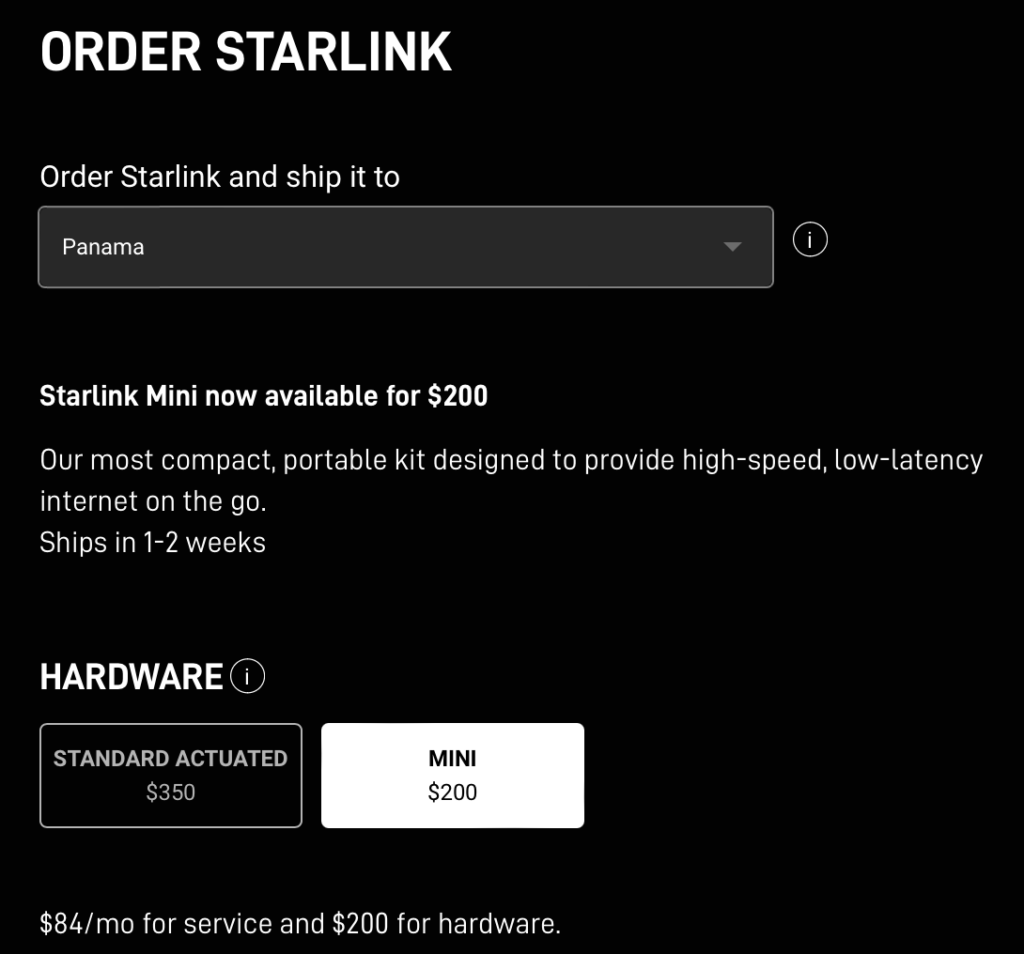
Satellites like Starlink in low-earth-orbit are in constant motion, and they are therefore not able to be positioned to focus primarily on areas where there is the most demand.
Any given Starlink satellite spends the bulk of its time passing over oceans, or territory with few connected customers.
In many developing countries, this means that there is massive amounts of Starlink satellite capacity passing by in orbit overhead unused.
SpaceX has played around with dropping the price of Starlink Standard hardware and plans to try and increase demand in these markets, but they can only go so far.
But as long the hardware can be sold for roughly breakeven - the monthly service plan fees in these underutilized areas are all gravy, no matter how cheap they need to be to appeal to the local market.
Our guess is that the Starlink Mini was designed to be as cheap as possible to manufacture so that SpaceX can better target bringing service to these developing markets.
With the Mini kit so cost-reduced, SpaceX is probably very happy with the margins it gets selling it for just $200.
But in the USA - customers (particularly mobile customers) are not nearly as price sensitive.
And offering the Mini at a lower price than the Starlink Standard will only undermine the demand for Starlink Standard.
And because of the potential negative impacts of the Mini on Starlink's network (see below) - SpaceX might have a strong preference for keeping as many developed world customers focused on Starlink Standard as possible.
This would explain why SpaceX is actually pricing the Mini above the Standard in the USA, at least for now.
Theory Two: Starlink Mini Drags Down The Network
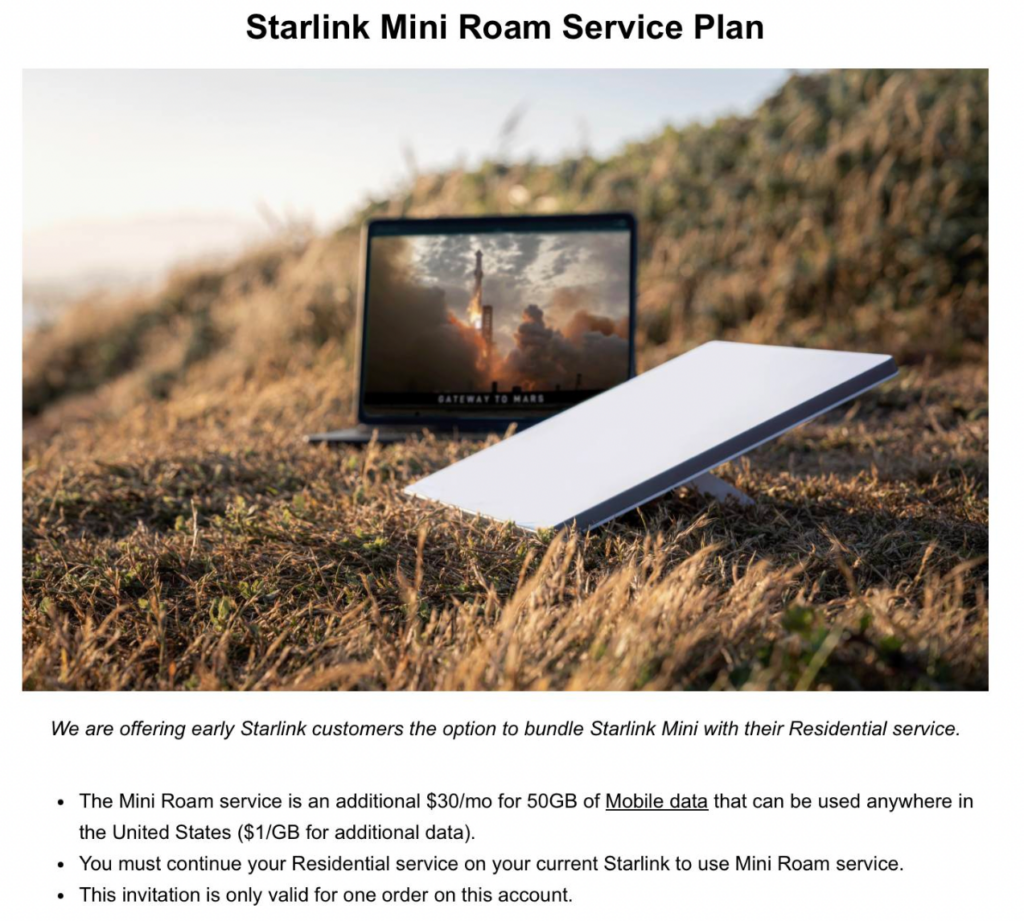
The Mini is smaller and less capable than Starlink Standard - but early speed tests have shown that it is more than capable enough to meet the needs of many, particularly nomads who are more concerned about size and power consumption than peak performance.
But what if, under identical usage patterns, the Starlink Mini puts substantially higher demands on the Starlink network and the satellites above?
This would be reminiscent of the evolution from 3G to 4G to 5G cellular. More modern cellular devices are more spectrally efficient, meaning that they take up less of the airwaves to transmit a given amount of data. One of the prime drivers for cell carriers pushing towards 5G has been to more efficiently use the airwaves, easing congestion.
What if the Mini doesn't ease congestion, but because of its smaller and less efficient antenna - it causes it?
If this is the case - in markets that are congested and capacity constrained (like much of USA), the customers using the Starlink Mini could actually have an outsized impact on the Starlink network overall.
This could ultimately slow things down for everyone.
If true, this could explain why SpaceX is limiting the Mini to 50 GB with the "Mini Roam" plan in the USA.
Hopefully some future testing and deep engineering analysis of the Starlink Mini will be able to fully explore this theory, and evaluate just how significant of a negative impact the Mini might have.
If the Mini is indeed a drag on the Starlink network - SpaceX may keep intentionally holding it back in key markets until some future date when there is vastly more excess satellite capacity in orbit to spread around.
Theory Three: Starlink Being Starlink
Maybe neither of the above theories are correct - and SpaceX will actually be soon be offering the Starlink Mini in the USA for just $250, accompanied by a $75/mo unlimited "Mini Roam" plan.
Haphazard and confusing product launches are sometimes just par for the course with Starlink.
Concluding Thoughts
SpaceX's Starlink FAQ makes it clear that we are still in the early days when it comes to the Starlink Mini rollout:
"Starlink Mini will expand to other markets over time. However, we do not have estimated dates to provide at this time. Stay tuned for updates on the wider release of Starlink Mini!
Our goal is to reduce the price of Starlink, especially for those around the world where connectivity has been unaffordable or completely unavailable."
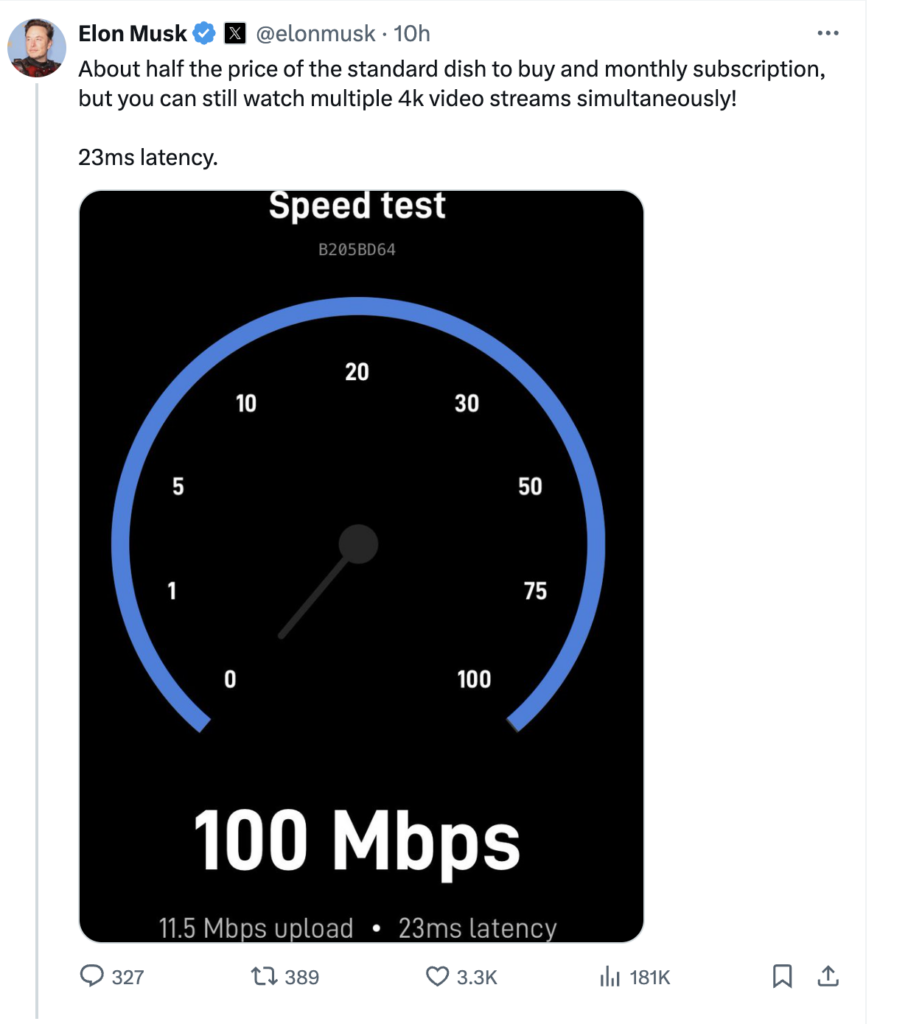
We suspect the four Central American countries the Mini has now launched in is just the start - and much of the developing world will soon have much more affordable and faster access to satellite broadband than ever before, thanks to the Starlink Mini.
But we also worry that the benefits of the Mini may be slow to come to the USA, and to nomads of all sorts who travel between countries
SpaceX's FAQ continues:
"In regions with high usage, like the US, where Starlink Mini places additional demand on the satellite network, we are offering a limited number of the Starlink Mini Kits to start at a higher price point."
Over time - as SpaceX brings more capacity online, things might change.
But if it does indeed prove true that the Mini puts a bigger load on the network than the Starlink Standard - SpaceX might never feel compelled to bring out the sort of affordable and unlimited mobile data plan that so many of us are wishing for.
We can only wait and see - and based on the changes to the plan offering page, we expect more news may come by July 4th.
With SpaceX, the one certainty is that just about everything is subject to change...
Learn More:
Starlink's Referral FAQ.
Use our referral link when purchasing equipment from Starlink.com and activating a consumer Residential or Roam Unlimited data plan - and get a FREE month of service!
And so will someone on our team, which helps us keep our multiple lines of service active for continued testing.
It's a win-win - you save money and help support MIRC!
Further Reading
- Starlink Satellite Internet For Mobile RV And Boat Use - Our featured guide focused on taking advantage of SpaceX's Starlink on the go.
- Mobile Satellite Internet Options -
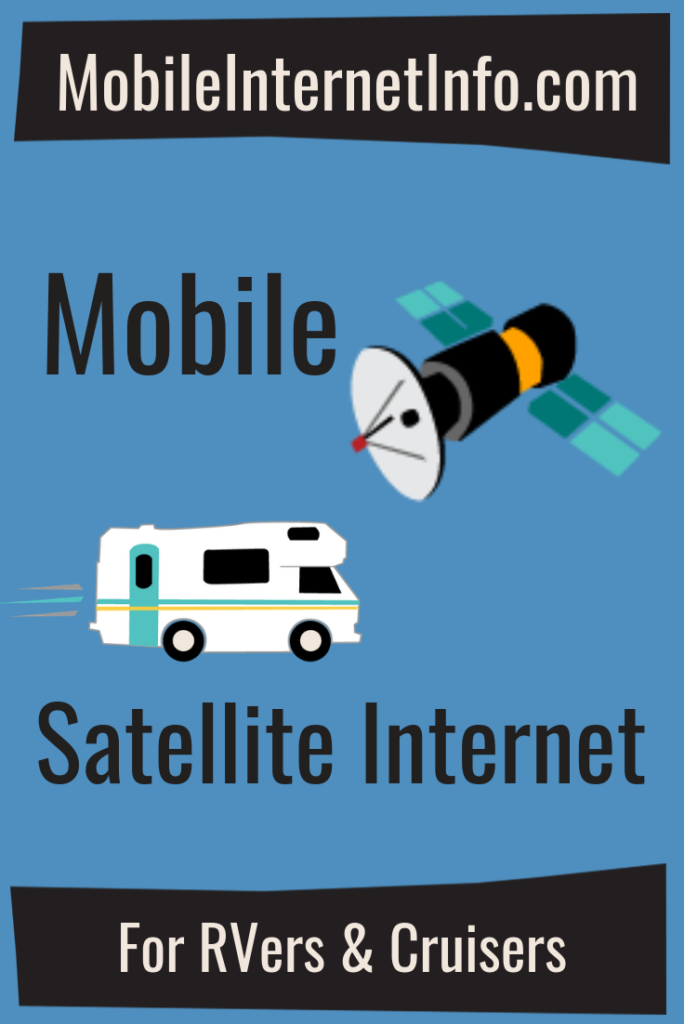 Our featured guide on all the current and future satellite internet options of interest to RVers and cruisers.
Our featured guide on all the current and future satellite internet options of interest to RVers and cruisers. - All our our Satellite Internet Resources - Our collection of guides, gear center entries and news coverage on satellite internet.
- Industry Update: Mobile Satellite Internet for RVers & Boaters – Early 2024 Update: Starlink, Kuiper, Direct To Cellular, and Beyond! - Our deep dive into the state of the satellite internet world.
And here is all of our recent satellite internet coverage:
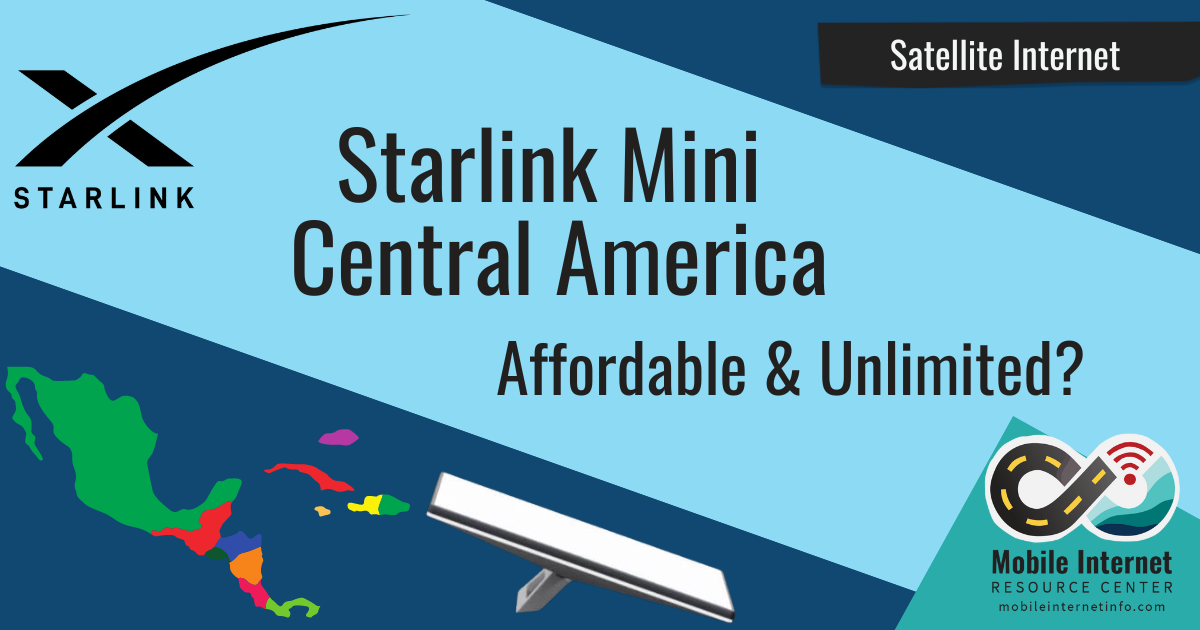






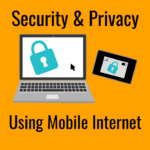

 Mobile Internet Resource Center (dba Two Steps Beyond LLC) is founded by Chris & Cherie of
Mobile Internet Resource Center (dba Two Steps Beyond LLC) is founded by Chris & Cherie of